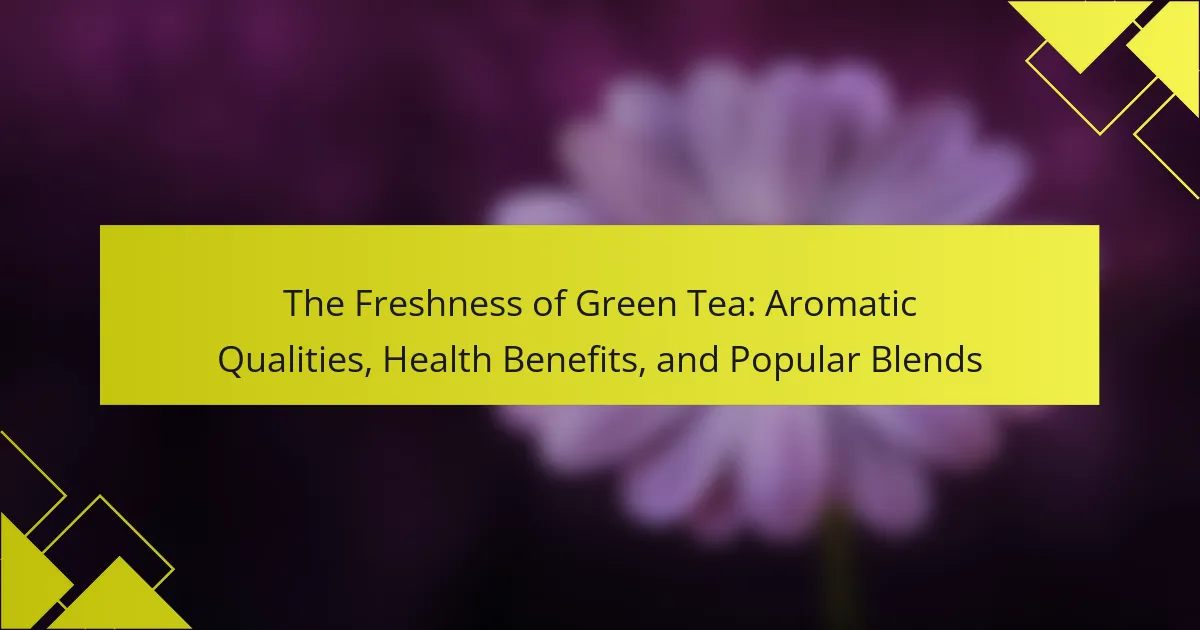
What is the scent of lavender?
The scent of lavender is floral, fresh, and herbaceous. It is widely recognized for its calming and soothing properties. The aroma is often described as sweet and slightly woody. Lavender’s scent can evoke feelings of relaxation and tranquility. It is commonly used in aromatherapy and relaxation products. Studies have shown that lavender scent can reduce anxiety and improve sleep quality. The essential oil is derived from the flowers of the lavender plant, primarily Lavandula angustifolia. Its distinct fragrance is popular in perfumes, candles, and skincare products.
How is lavender scent derived?
Lavender scent is derived from the flowers of the Lavandula plant. The primary method of extraction is steam distillation. During this process, steam passes through lavender flowers. The steam captures the essential oils and volatile compounds. These are then condensed and collected as liquid. The resulting product is pure lavender essential oil. This oil contains compounds like linalool and linalyl acetate. These compounds contribute to the characteristic aroma and calming properties of lavender.
What are the key components of lavender aroma?
The key components of lavender aroma include linalool, linalyl acetate, and camphor. Linalool is a terpene alcohol known for its floral scent and calming effects. Linalyl acetate contributes to the sweet and fruity notes of lavender. Camphor adds a fresh, slightly woody aroma to the overall scent profile. These components work together to create the distinctive and soothing fragrance associated with lavender. Studies have shown that linalool and linalyl acetate are primarily responsible for the therapeutic benefits of lavender, such as reducing anxiety and promoting relaxation.
How do these components contribute to lavender’s scent profile?
Lavender’s scent profile is primarily shaped by its chemical components, including linalool and linalyl acetate. These compounds create a floral and herbaceous aroma that is both soothing and refreshing. Linalool contributes to the calming effects associated with lavender. It has been shown to reduce anxiety and promote relaxation. Linalyl acetate adds sweetness and a fruity note to the fragrance. Together, these components create a balanced scent that is widely appreciated in aromatherapy. Studies indicate that lavender’s scent can improve sleep quality and lower stress levels. The specific ratios of these components can vary based on the lavender species and growing conditions. This variability can subtly influence the overall scent experience.
What are the calming properties of lavender?
Lavender possesses calming properties primarily due to its aromatic compounds. These compounds, such as linalool and linalyl acetate, interact with the brain’s neurotransmitters. Research indicates that inhaling lavender aroma can reduce anxiety and improve sleep quality. A study published in the Journal of Alternative and Complementary Medicine found that lavender essential oil significantly decreased anxiety levels in participants. Additionally, lavender is used in aromatherapy to promote relaxation and emotional balance. Its soothing scent can lower heart rate and blood pressure, further contributing to a sense of calm.
How does lavender promote relaxation and reduce stress?
Lavender promotes relaxation and reduces stress primarily through its aromatic compounds. The scent of lavender has been shown to lower heart rate and blood pressure. Research indicates that inhaling lavender essential oil can lead to decreased levels of cortisol, a stress hormone. A study published in the Journal of Alternative and Complementary Medicine found that participants exposed to lavender aroma reported lower anxiety levels. Additionally, lavender’s sedative properties can enhance sleep quality, further contributing to stress reduction. Its calming effects are attributed to compounds like linalool and linalyl acetate, which interact with the brain’s neurotransmitters.
What scientific studies support lavender’s calming effects?
Lavender has been scientifically shown to have calming effects. A study published in the Journal of Alternative and Complementary Medicine in 2013 found that lavender essential oil reduced anxiety and improved sleep quality in participants. Another research conducted by Lee et al. in 2016 demonstrated that inhaling lavender aroma significantly lowered stress levels in college students during exams. Additionally, a systematic review in 2019 highlighted multiple studies confirming lavender’s efficacy in reducing anxiety and promoting relaxation. These findings collectively support the calming effects of lavender through various scientific investigations.

How is lavender scent utilized in various applications?
Lavender scent is utilized in various applications such as aromatherapy, personal care products, and household items. In aromatherapy, lavender essential oil is known for its calming effects, promoting relaxation and reducing anxiety. Many people use it in diffusers or during massages. Personal care products often include lavender for its fragrance and potential skin benefits. Products like lotions, shampoos, and soaps frequently feature lavender scent. In households, lavender is used in candles, air fresheners, and cleaning products for its pleasant aroma. Research indicates lavender scent can improve sleep quality and reduce stress levels. Studies show that inhaling lavender can lower heart rate and blood pressure, supporting its use in wellness applications.
What are the common methods of lavender application?
Common methods of lavender application include essential oils, aromatherapy, topical use, and culinary incorporation. Lavender essential oils can be diffused in the air for relaxation. Aromatherapy uses lavender to promote calmness and reduce anxiety. Topical application involves using diluted lavender oil on the skin for soothing effects. Culinary use includes adding lavender to dishes for flavor and aroma. These methods are widely used due to lavender’s recognized calming properties. Studies have shown that lavender can decrease stress and improve sleep quality.
How is lavender used in aromatherapy?
Lavender is used in aromatherapy primarily for its calming and relaxing effects. It is commonly inhaled through diffusers or added to baths. Lavender essential oil can also be applied topically when diluted with a carrier oil. These methods help reduce anxiety and promote better sleep. Studies indicate that inhaling lavender can decrease heart rate and blood pressure. Research published in the Journal of Alternative and Complementary Medicine supports these calming effects. Lavender’s pleasant aroma is also known to enhance mood and alleviate stress.
What are the benefits of using lavender in personal care products?
Lavender provides numerous benefits in personal care products. It is known for its calming and soothing properties. Lavender oil can reduce anxiety and improve mood. Its antimicrobial properties help in skin healing and preventing infections. Lavender also acts as a natural fragrance, offering a pleasant scent without synthetic chemicals. Additionally, it can promote better sleep when used in nighttime products. Studies indicate that lavender can enhance relaxation and reduce stress levels, making it a valuable ingredient in personal care formulations.
How can lavender scent enhance home environments?
Lavender scent can enhance home environments by promoting relaxation and reducing stress. Its calming properties are well-documented in aromatherapy. Research shows that inhaling lavender can lower heart rate and blood pressure. A study published in the Journal of Alternative and Complementary Medicine found that lavender aroma significantly improved sleep quality. Additionally, lavender’s pleasant fragrance can mask unpleasant odors in the home. This makes it a popular choice for air fresheners and candles. Overall, lavender scent contributes to a peaceful and inviting atmosphere.
What are effective ways to incorporate lavender into home decor?
Effective ways to incorporate lavender into home decor include using lavender-scented candles, fresh or dried lavender arrangements, and lavender-infused textiles. Lavender-scented candles can create a calming atmosphere and enhance relaxation. Fresh or dried lavender can be placed in vases or used in potpourri for visual appeal. Lavender-infused textiles, such as throw pillows or curtains, can add a subtle fragrance while enhancing the decor. Additionally, lavender essential oil can be used in diffusers to fill a room with its soothing aroma. These methods utilize lavender’s aesthetic and aromatic qualities to enhance home environments.
How does lavender scent impact mood and atmosphere?
Lavender scent positively impacts mood and atmosphere by promoting relaxation and reducing anxiety. Studies show that inhaling lavender aroma can decrease heart rate and blood pressure. This calming effect is attributed to lavender’s active compounds, such as linalool and linalyl acetate. Research published in the Journal of Alternative and Complementary Medicine indicates that lavender can improve sleep quality. Additionally, lavender scent is often used in aromatherapy to create a soothing environment. Its pleasant fragrance enhances emotional well-being and fosters a serene atmosphere. Overall, lavender scent is effective in elevating mood and creating a peaceful space.

What are the best practices for using lavender scent?
The best practices for using lavender scent include diffusing, topical application, and incorporating it into cleaning products. Diffusing lavender oil can create a calming atmosphere. Use a diffuser with a few drops of lavender oil mixed with water. This method is effective for relaxation and sleep improvement. For topical application, dilute lavender oil with a carrier oil. This can help with skin irritations and promote relaxation. Applying diluted lavender oil to pulse points enhances its calming effects. Additionally, adding lavender scent to cleaning products can provide a fresh aroma while benefiting from its antibacterial properties. Studies show that lavender scent can reduce anxiety and improve mood, supporting its use in various applications.
How can one effectively use lavender for relaxation?
To effectively use lavender for relaxation, one can utilize lavender essential oil in various ways. Diffusing lavender oil in a room can create a calming atmosphere. Applying diluted lavender oil to pulse points, such as wrists or neck, can enhance relaxation. Adding a few drops of lavender oil to a warm bath can promote a soothing experience. Drinking lavender tea is another method to enjoy its calming effects. Research indicates that inhaling lavender aroma can reduce anxiety and improve sleep quality. A study published in the Journal of Alternative and Complementary Medicine found that lavender aromatherapy significantly decreased anxiety levels.
What are recommended dosages for lavender essential oil?
The recommended dosage for lavender essential oil varies based on its application. For aromatherapy, 3 to 5 drops in a diffuser is common. For topical use, it is often diluted at a ratio of 1-2 drops per teaspoon of carrier oil. In studies, dosages of 0.5 to 1 ml have shown effectiveness in reducing anxiety. Always consult a healthcare professional for specific health conditions or concerns.
How can lavender be safely used around children and pets?
Lavender can be safely used around children and pets by ensuring proper dilution and application methods. Use lavender essential oil in a diffuser with a low concentration. Keep the diffuser out of reach of children and pets. Avoid direct application of undiluted essential oil on skin. Instead, mix a few drops with a carrier oil for safe topical use. Always monitor for any allergic reactions or sensitivities. Additionally, choose lavender products specifically formulated for children or pets. This minimizes risks associated with essential oils. Research indicates that lavender has calming properties, making it beneficial in appropriate contexts.
What tips can enhance the experience of using lavender scent?
To enhance the experience of using lavender scent, consider using high-quality essential oil. Pure lavender oil contains higher concentrations of therapeutic compounds. Diffusing lavender oil in a room can create a calming atmosphere. This method helps disperse the aroma evenly throughout the space. Applying diluted lavender oil to pulse points can provide personal relaxation. The skin absorbs the scent, enhancing its calming effects. Incorporating lavender into a warm bath can also be beneficial. Studies show that warm baths with lavender can reduce stress levels. Lastly, using lavender-scented candles can create a soothing ambiance in any setting. The gentle flicker of candlelight combined with the scent enhances relaxation.
How can one create a calming lavender-infused space at home?
To create a calming lavender-infused space at home, use lavender essential oil or dried lavender flowers. Lavender essential oil can be diffused using an essential oil diffuser. This method disperses the calming scent throughout the room. Alternatively, place dried lavender sachets in drawers or hang them in closets. This provides a subtle aroma that promotes relaxation. Incorporate lavender plants in your home for a natural touch. Research shows that lavender can reduce anxiety and improve sleep quality. Studies indicate that inhaling lavender scent can lower heart rate and blood pressure, enhancing overall well-being.
What are common mistakes to avoid when using lavender products?
Common mistakes to avoid when using lavender products include not diluting essential oils before application. Undiluted lavender oil can cause skin irritation. Another mistake is using lavender products near sensitive areas like the eyes. This can lead to discomfort and potential harm. Additionally, some users overlook the expiration dates on lavender products. Expired products may lose efficacy or cause adverse reactions. It’s also important to avoid using lavender products excessively. Overuse can lead to headaches or allergic reactions. Lastly, not considering individual sensitivities to lavender can result in unexpected side effects. Each person may react differently to lavender, so caution is advised.
Lavender, a widely recognized aromatic plant, is known for its floral, fresh, and herbaceous scent that promotes relaxation and tranquility. This article explores the calming properties of lavender, detailing the key chemical components such as linalool and linalyl acetate that contribute to its soothing aroma. It also examines various methods of lavender application, including aromatherapy, personal care products, and home decor, while highlighting scientific studies that support its efficacy in reducing anxiety and improving sleep quality. Additionally, best practices for using lavender safely and effectively are discussed, ensuring optimal benefits for users.



